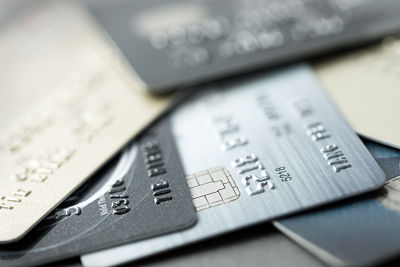What’s the Deal With the New Chips in Debit Cards?
If you have a debit card that you use in person, you’ve probably noticed a big change in the past year or so. More and more, you may be entering your card into the point-of-sale terminal, rather than swiping it. Although the process has a few differences–you might not have to sign a receipt, for instance–you may not see what all the fuss is about. However, the new way of doing things, called “chip and PIN,” offers customers some behind-the-scenes benefits that protect them from fraud and other abuse.
History of Chip and Pin
This new chip-and-PIN method isn’t anything new, and in fact, the United States is way behind the times in adopting the technology. For more than 10 years, the chip-and-PIN method has been the standard in Europe, where it’s used to help combat fraud. So, why has America struggled to catch on? There’s no main reason, but many point to the size and complexity of the States’ banking system, which makes adoption difficult, along with the lower rates of credit and debit card theft that make the system a lower demand.
 The New Card
The New Card
If your bank has already sent you an up-to-date debit or credit card, take a close look. Embedded within the front of the card, you’ll see the new chip, which is either gold or silver and about the size of your pinky nail. However, flip the card over and you’ll also see the old magnetic strip as well. If you’re a regular shopper, the reason for having both technologies should be pretty obvious: many retailers still need to catch up to the chip-and-PIN system. Again, this is why the American banks have put off embracing this new technology – it takes a lot of effort to roll out.
How It Works
Put simply, when you swipe your card, information about the card and your corresponding bank account is sent to the business. Of course, you’ll often have to sign or enter your PIN to complete the transaction. The new chip system improves on the old system by doing away with signatures, which offer less fraud protection that PINs. Even if you’re used to entering a PIN with your swipe card, your chip card keeps you better protected by changing the data your card sends to the business each time you use it. This makes it much harder for thieves to make a false copy of your card.
The Future of Debit Card Chips
Although chip-and-PIN cards are more secure than swipe cards, their introduction to the United States is a little poorly timed. That’s because a new system of banking, using smart phones and smart watches, threatens to take over transactions. All the big names in the tech world have started up their own payment systems, which require the user to simply tap his or her phone or watch to the payment terminal to make a purchase. Still, this technology is new and doesn’t have the same support as the push to make chip-and-PIN popular. So, even though we’re becoming more dependent on our mobile banking, it might be some time before we can ditch our plastic once and for all.






